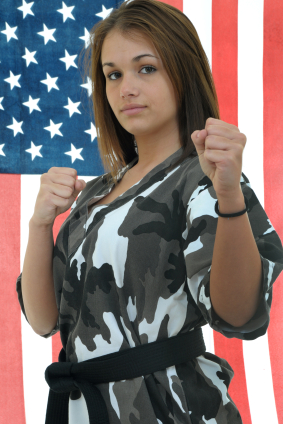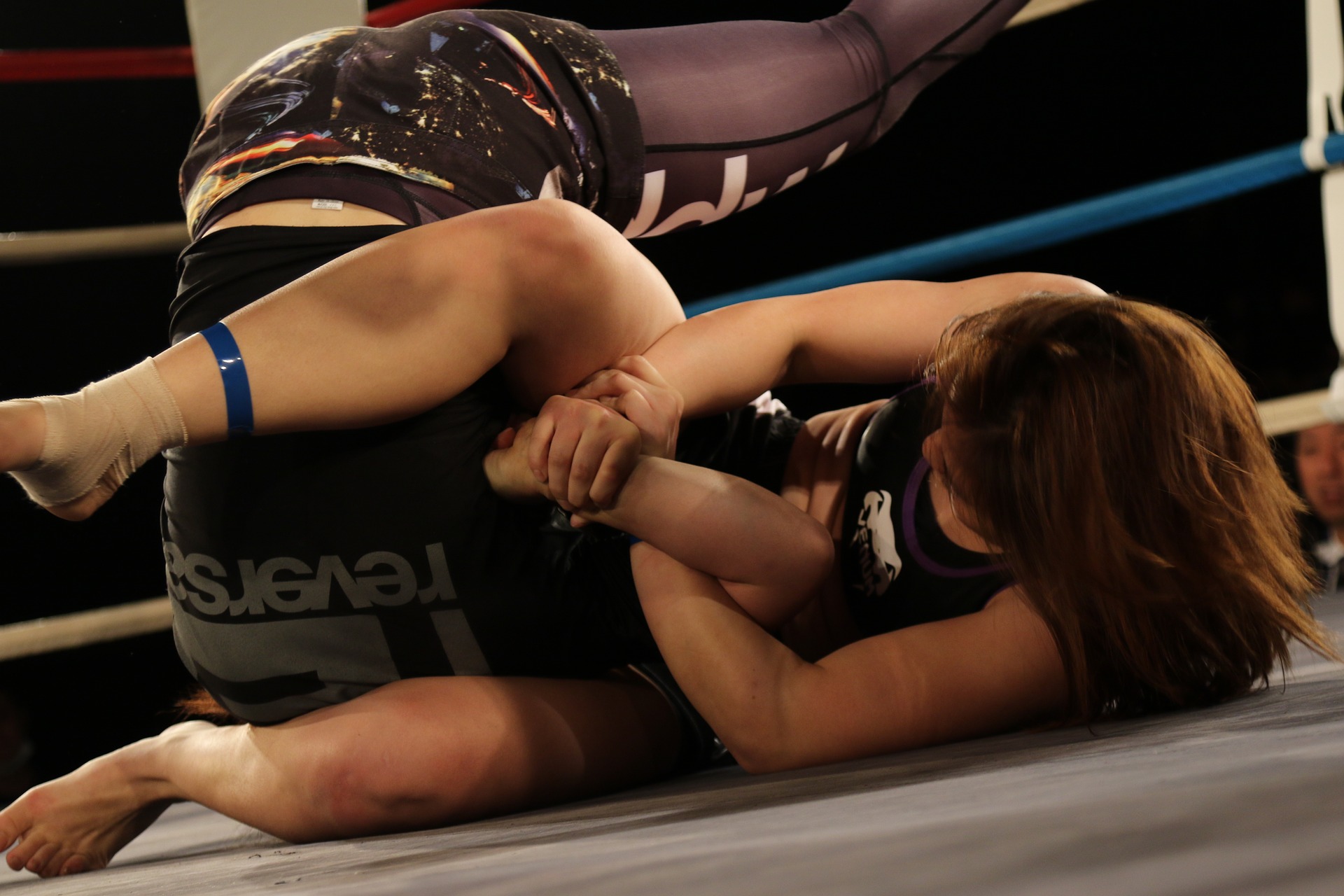It is no secret that Asian martial arts are incredibly popular in the United States. Any given town may have two or three Korean Tae Kwon Do schools, a few Okinawan karate schools, a Chinese kung fu school or two, and a handful of Judo, Aikido, Jiu Jitsu, and other schools scattered about. The prospective martial arts student can pick and choose which style appeals to him or her most and is even free to combine elements from multiple styles. Such was not the case in the founding days of the martial arts, when arts were passed on from student to teacher in a direct lineage. It was not always easy to find a teacher, and the student had to spend a lifetime mastering the art. There was no “picking and choosing”, no shopping for styles and masters. So how have the martial arts integrated into western consumer culture? Quite well, actually. The freedom to pick and choose has allowed the blending of styles that have been separated for centuries. In the end, we are seeing the emergence of a truly American class of fighting styles. This conglomeration of fighting arts is a melting pot, much as America itself is.
It should be pointed out early on that this article makes many sweeping generalizations that are not true of many particular martial arts schools and styles. Some schools proved to be adaptable to local influences almost immediately, while others have retained their traditional characteristics for decades. This article is not intended to say that one way is better than another. It is just an observation of how the martial arts scene, overall, in America is changing.
The first wave of the martial arts boom in the United States occurred in the years directly following World War II. American servicemen stationed in the east discovered the strange, effective fighting arts of Japan while based in the region as part of the post war occupational force. The primary martial art that was introduced at this time was Judo, which was popular in mainland Japan, along with some forms of empty hand martial arts from the island of Okinawa. These Okinawan arts are collectively known by their Japanese name–the words “kara” meaning “empty” and “te” meaning “hand” combine to form the now common word “karate” or “empty hand.” The second wave was an interest in Chinese forms of martial arts (kung fu), largely popularized by the demonstrations and movie and TV roles of Bruce Lee in the nineteen-sixties. The martial arts enthusiasts of generation X can largely trace their martial arts influences to the Karate Kid movies.
Yet, through all of the decades of martial arts practice in America, martial arts remained firmly rooted in its oriental culture and tradition. Classes began with salutations in Japanese or Chinese, and the same languages were used to count out punches and kicks during drills. The more closely the American martial arts schools held to the traditions of their forbearers, the more the art was respected. Schools that integrated oriental martial arts with American boxing and wrestling were often viewed as having somehow “watered down” the traditional nature of their art.
Those views have been slowly changing over time, and mixed martial arts (MMA), which combines striking arts with wrestling and grappling arts, has become an accepted class of martial arts in its own right. This has been particularly highlighted by the success of the Ultimate Fighting circuit, which is as close to no holds barred fighting as you’ll find in modern sports. The early Ultimate Fighting Championships featured competitors who were essentially one dimensional. Someone might be a boxer, a grappler, a karate practitioner, or something else, but rarely did you see true mixed martial artists. However, the one dimensional fighters soon found themselves outmatched by the more versatile MMA competitors. This was most stunningly highlighted recently when Royce Gracie, Jiu Jitsu master and the winner of three of the first four Ultimate Fighting Championships, was defeated soundly in his return match by Matt Hughes, a modern MMA fighter.
Does this mean that traditional martial arts have been supplanted by the new breed of MMA styles? Absolutely not. Rather, it just goes to show that, even in the martial arts, there is not one size that fits all. Clearly, if you are fighting three five minute rounds in a chain link octagon, then MMA might be the way to go. However, who can say what would work best in a real world confrontation? Besides, as any true martial arts practitioner knows, the true value of studying the martial arts comes not in finding ways to beat your opponent–rather, the real challenge is to face down your own failings and become the best person you can be.
Guest Writer bio: Gary Russell is a freelance writer, martial arts practitioner, and software engineer. He is the founder of TopSearch Consulting, a full service web content and keyword article provider.
Article Source: http://EzineArticles.com/220456
Yes, you too could be a guest writer on my blog. Email me your article idea and we’ll talk. I’ve used guest writers for my monthly newsletter years ago and I’ll do it again.



